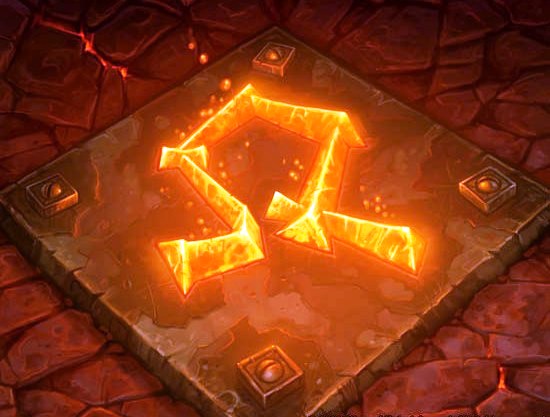Glyph of Warding (spell)
Glyph of Warding is a spell that inscribes a hieroglyphic character or symbol onto an object or surface, embedding a dormant dweomer within. Once disturbed, the glyph immediately discharges the stored magic, affecting all within its range. The caster selects the effect from their existing spell list, meaning the glyph can serve as either a trap or a boon.
| Range | touch |
| Duration | until discharged |
| Area of Effect | 5 ft. + 2 ft. per level circle |
| Casting Time | 2 rounds |
| Saving Throw | special |
| Level | cleric (3rd) |
Contents
Possible effects include a curse, suffusing with poison or a flame strike. Alternatively, the glyph may offer a beneficial effect, such as curing wounds or bestowing divine favour. To create the glyph, the caster must first cast "glyph of warding", immediately followed by the second dweomer, without pause or hesitation. If the second spell's casting is disrupted, both spells fail and the glyph remains inert.
Due to their versatile nature, glyphs can serve as long-term defenses for valuables, entrances and sacred locations. Clever casters may use misleading inscriptions, placing mundane markings alongside active glyphs to obscure their presence. Additionally, because the glyph's effect is independent of its inscribed form, an unassuming rune may contain devastating magic.
Casters must carefully consider placement, as an ill-placed glyph can be inadvertently triggered by allies. However, glyphs may also function as pre-planned tactical weapons, placed in strategic locations before a battle or siege.
Discharge
Once the glyph is inscribed, the object it protects cannot be moved or carried freely. Any adjustment, pressing or interaction with the object will trigger the glyph, discharging its stored magic. For permanent surfaces, such as floors, walls or railings, the glyph is activated when a creature comes within 5 feet or enters the hex it occupies. Unlike physical objects, these glyphs function as area-based wards, affecting anyone who unknowingly steps into their range.
The stored spell's area of effect is overidden by that of the glyphs, though its original duration remains unchanged. The caster's level at the time of inscription is used to determine the stored spell's effect and potency. As ever, spells that only affect those that share the caster's religion remain bound by this restriction, even when stored in a glyph.
Once the glyph has discharged, it cannot repeat the magic again. The glyph itself evaporates, leaving behind no trace of its dweomer. Any protective effect it once provided is permanently lost, requiring a new glyph to be inscribed if continued warding is desired.
Number
Though one glyph may be produced every day, the maximum number cannot exceed the level of the caster. Thus, a 7th-level caster could not create more than seven glyphs in total, which would have to be done over the course of a week. Once this maximum is reached, the caster cannot create additional glyphs unless an existing one is dispelled. To dispel a glyph, the caster must physically touch it — glyphs cannot be removed from a distance.
Because the caster chooses which glyph to dispel, they retain control over their total number of wards at all times. If no glyph is within reach, there is nothing that can be done except wait until an existing glyph is triggered or travel as needed.
